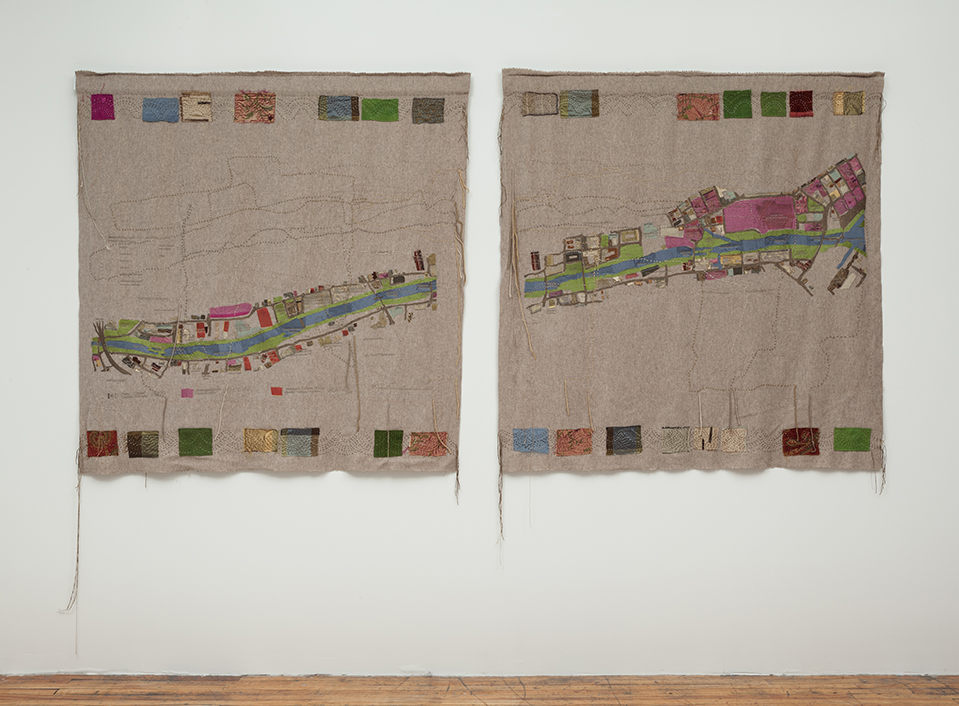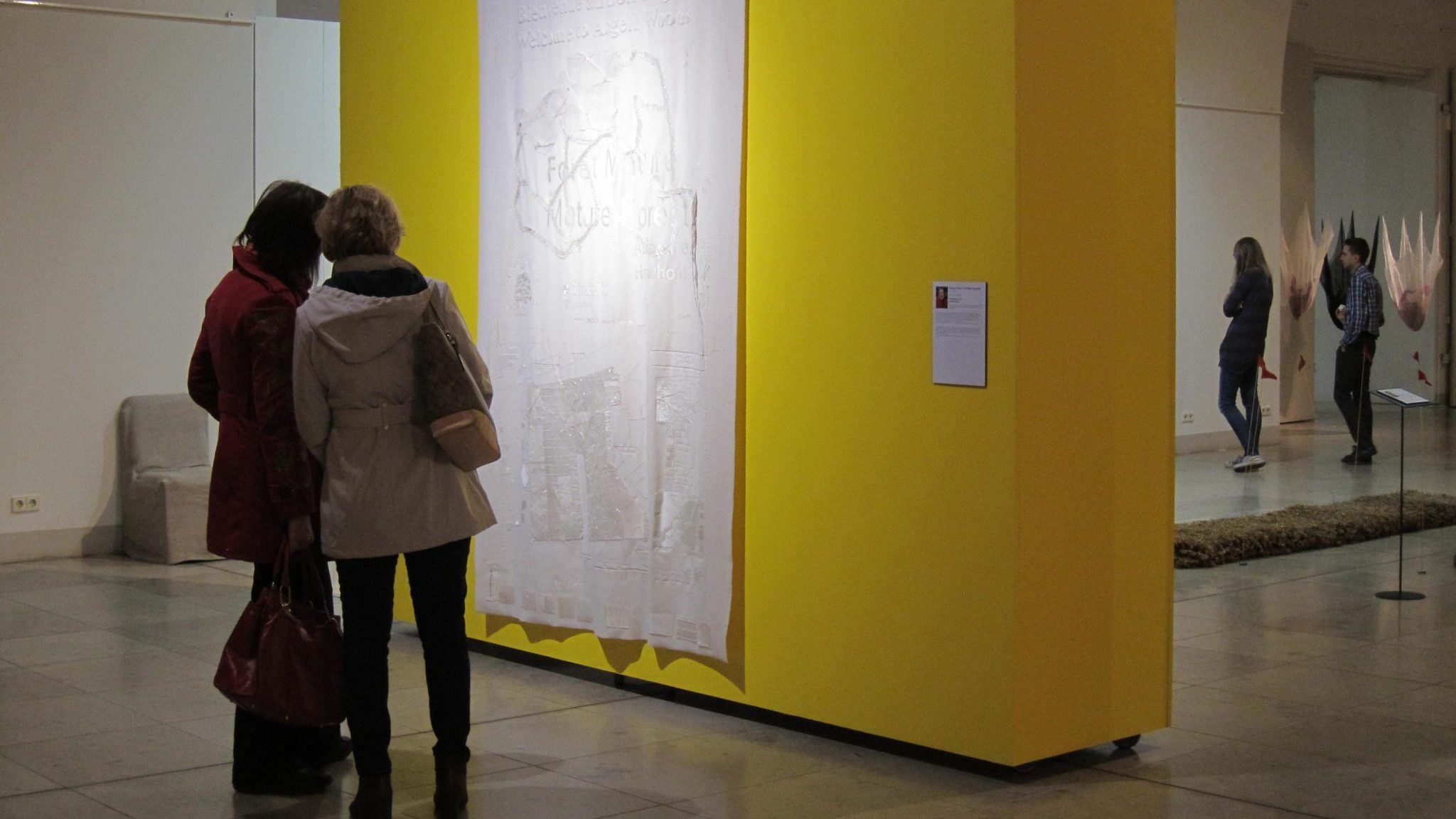As support for my research-creation Insight Grant Application, Learning With the Saint Lawrence (2025-2028), this site offers documentation of three bodies of work that demonstrate the depth of engagement of my sustained practice: Learning With the St. Lawrence | Apprendre Avec le Saint-Laurent 2019-2024 (5 images), Walk in the Water | Marcher sur les eaux, 2018 (3 images, 2 audio excerpts, 1 video); and Nel mezzo del cammin, 2012-16 (4 images).
Please scroll down.
Additional work may be found at my professional website, akaredhanded.com, and the site for my Concordia University Research Chair activities re-imagine.ca.
- LEARNING WITH THE ST. LAWRENCE | APPRENDRE AVEC LE ST-LAURENT (2019-2024): A body of research and creation that uses an interdisciplinary lens to explore Montrealers’ relationship with the St. Lawrence River, as ecosystem and imaginary.
Two research-creation outcomes from the project: 1) The River’s Threads | Au fil du Saint-Laurent | Kanonhwénhton Wahseriie’tatá:tie ne Kaniataràke (2024), a community stitch project featuring sustainable textile processes (natural dyeing, eco-printing, cyanotype) using biodegradable materials; and 2) Unbalanced/Rebalancing (2024), a wall-sized digital jacquard embroidery in triptych form, created with natural fibres at the TextielLab, the TextielMuseum’s professional workshop in Tilburg, NL.
5 images.
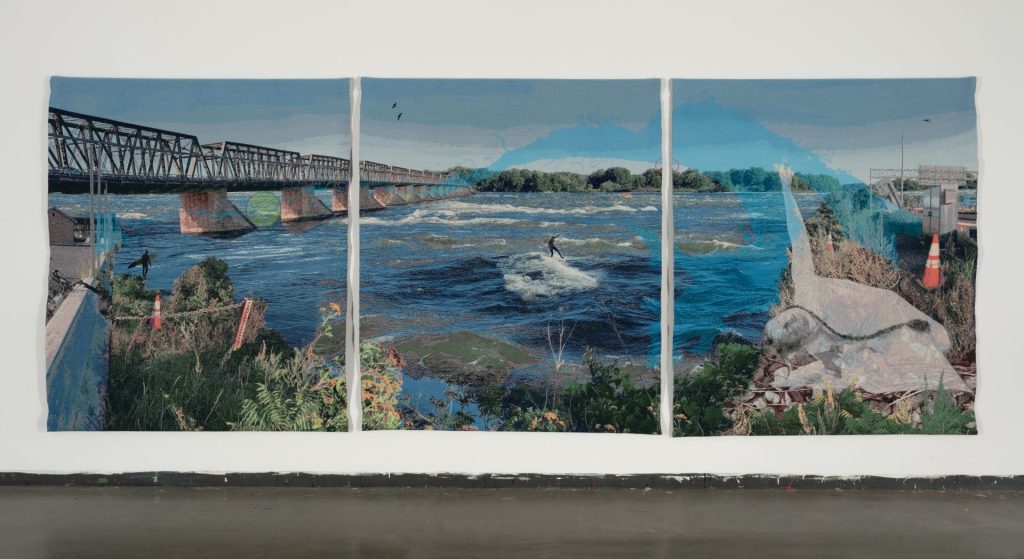
Context/Description: These images represent work from the first iteration of Learning with the St. Lawrence, which brought a research-creation methodology to our interdisciplinary exploration of Montrealers’ relationship with the St. Lawrence as ecosystem and imaginary. We developed research-creation (Unbalanced/Rebalancing (2024), above and below,and public outreach activities (including the community embroidery project, The River’s Threads (2024), below) and built a website (learningwiththestlawrence.ca) to showcase projects including ‘Field Guides’ commissioned from artists.
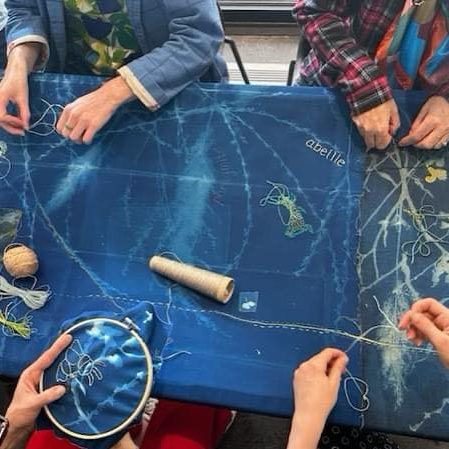
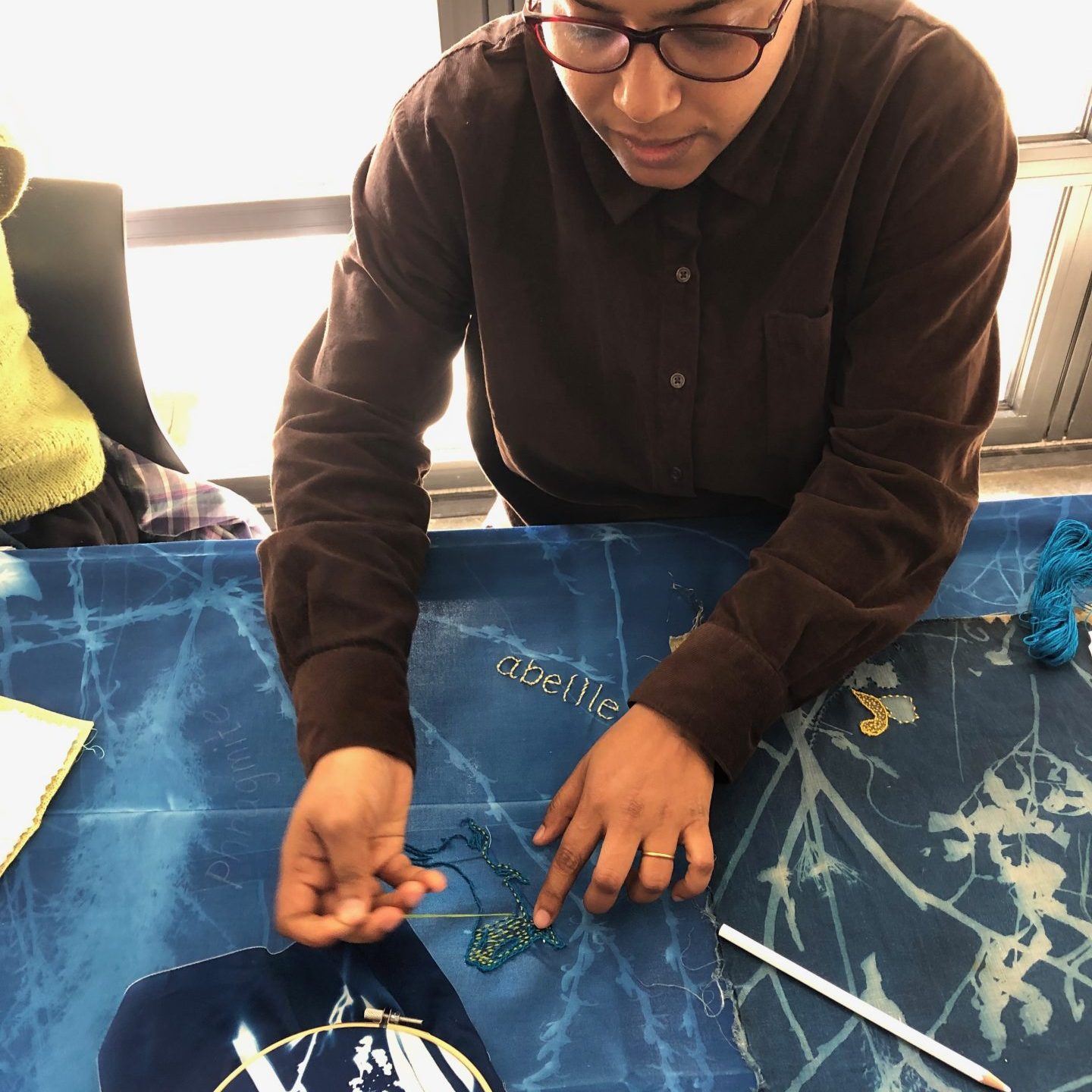
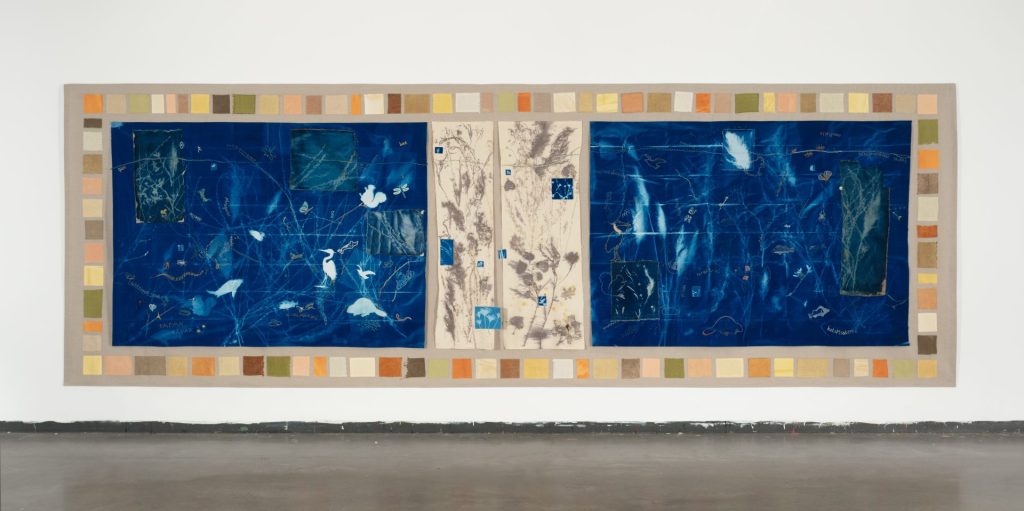
Relationship to the proposed project: The research-creation works of LWtSL (2019-2024) lay the groundwork for the proposed climate-change focussed research of Learning With the Saint Lawrence (2025-2028), which will continue to work with the River as concept and muse, building deeper interdisciplinary connections and orienting to sustainable processes, transparently used. These will include textiles, photography, audio, and digital processes, the environmental footprint of which will be part of our considerations.
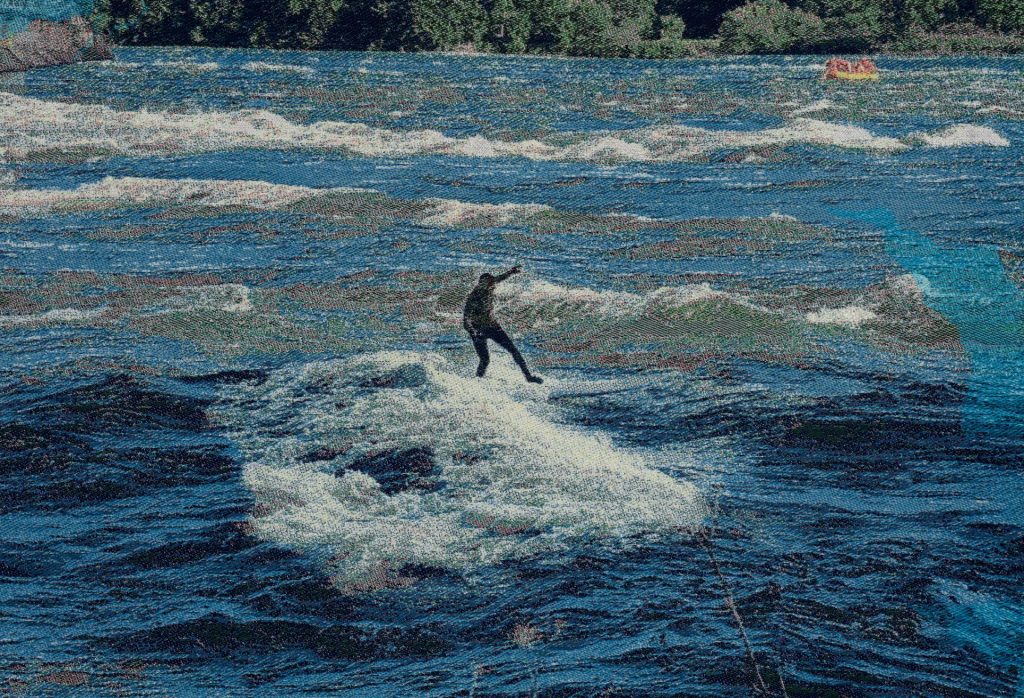
- WALK IN THE WATER | MARCHER SUR LES EAUX (2018): Electronic textile installation with embedded audio, 9 feet high x 12.5 feet wide in eight layers; linen, silk, organza and textile piecing; digital and hand embroidery; conductive thread and velcro, mini-speakers, digital amplifiers, WAV trigger; wood rigging.
3 images; 2 audio excerpts; 1 video.
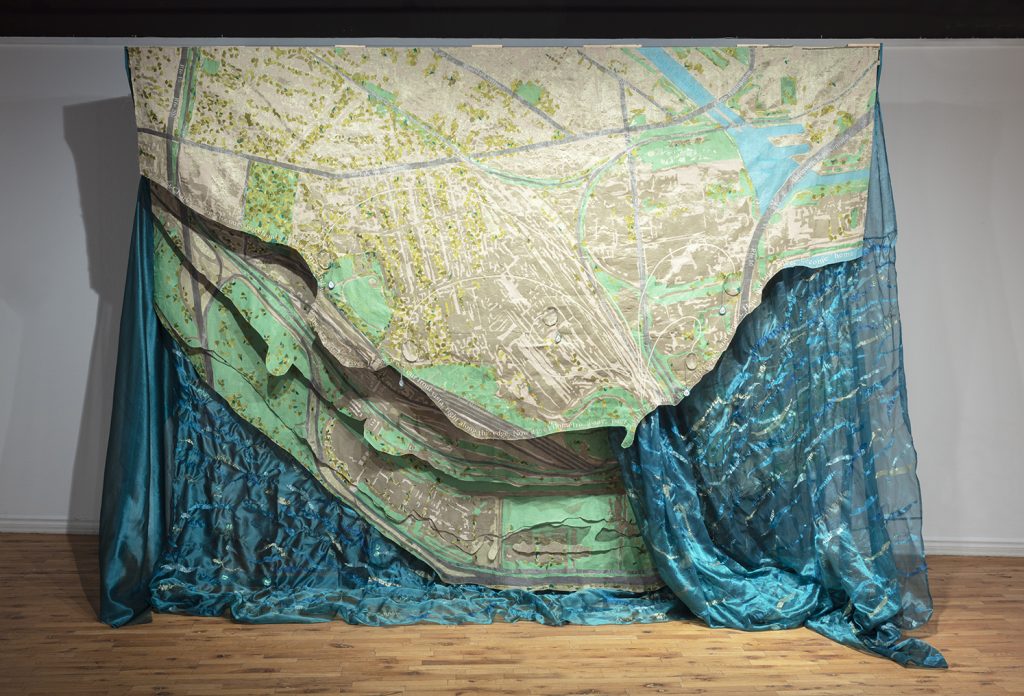
Context/Description: Walk in the Water | Marcher sur les eaux uses visual art and oral history to explore the St. Lawrence River’s shoreline at the de-industrialized Montreal neighbourhood of Pointe-St-Charles, from environmental and social perspectives. Layers of textile mapping display six shoreline changes through 200 years of human infilling, often with contaminated soil; touch sensitive switches play back audio comments from locals and experts about the River and their hopes for it.
The project draws on urban planning, history, political ecology, botany, literature, environmental studies, water ecologies, and more. Bilingual (English-French), Walk in the Water is the first major research-creation outcome of my Concordia University Research Chair in Socially Engaged Art and Public Pedagogies.
Relationship to proposed project: A foundation for the proposed Learning With the St. Lawrence, Walk in the Water is my first research-creation project to raise awareness of complex River issues and histories, of some of the many ways that people can and do connect with its waters and creatures, and to encourage affection and advocacy for this remarkable feature of central/eastern Canada.
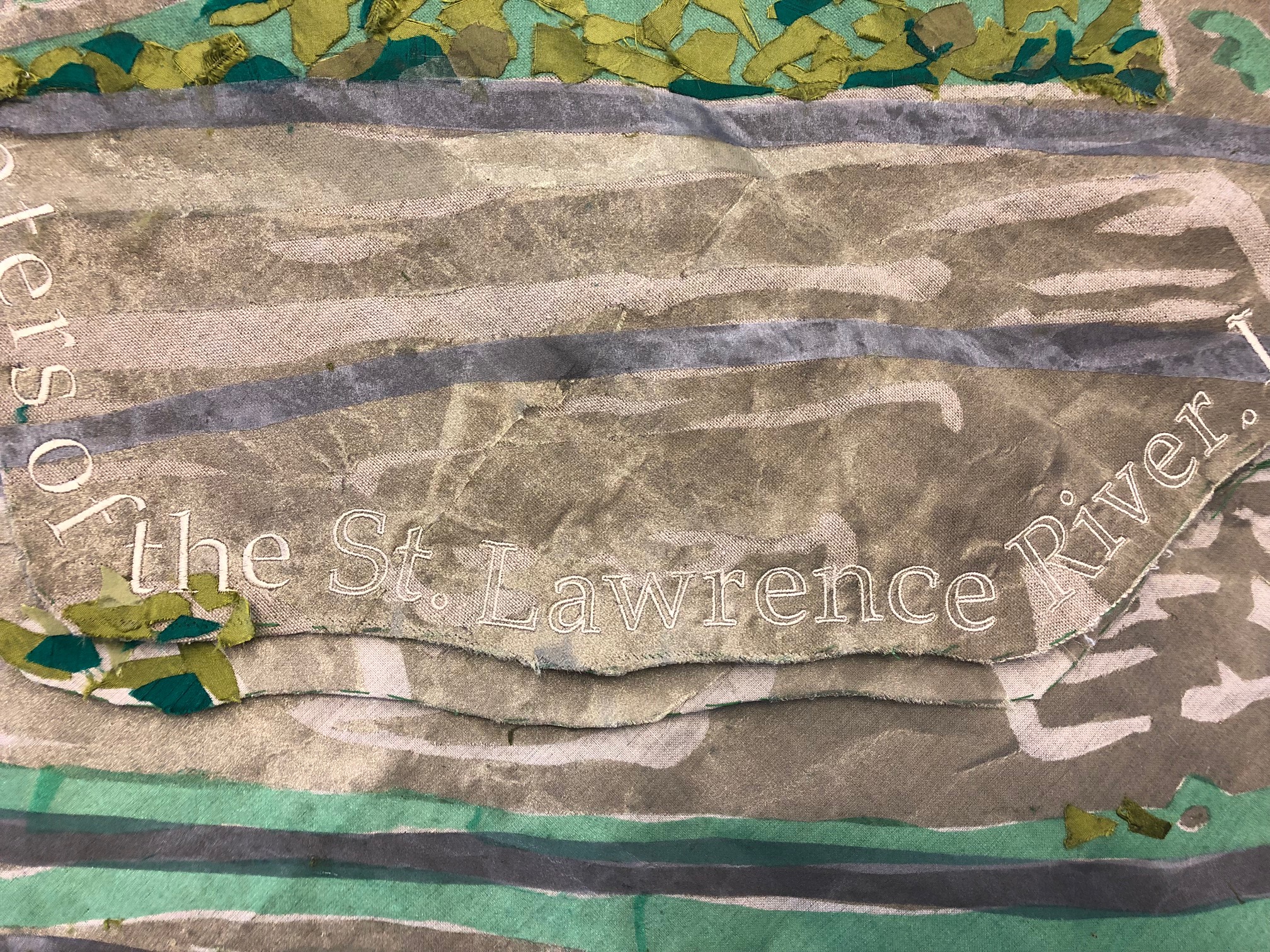
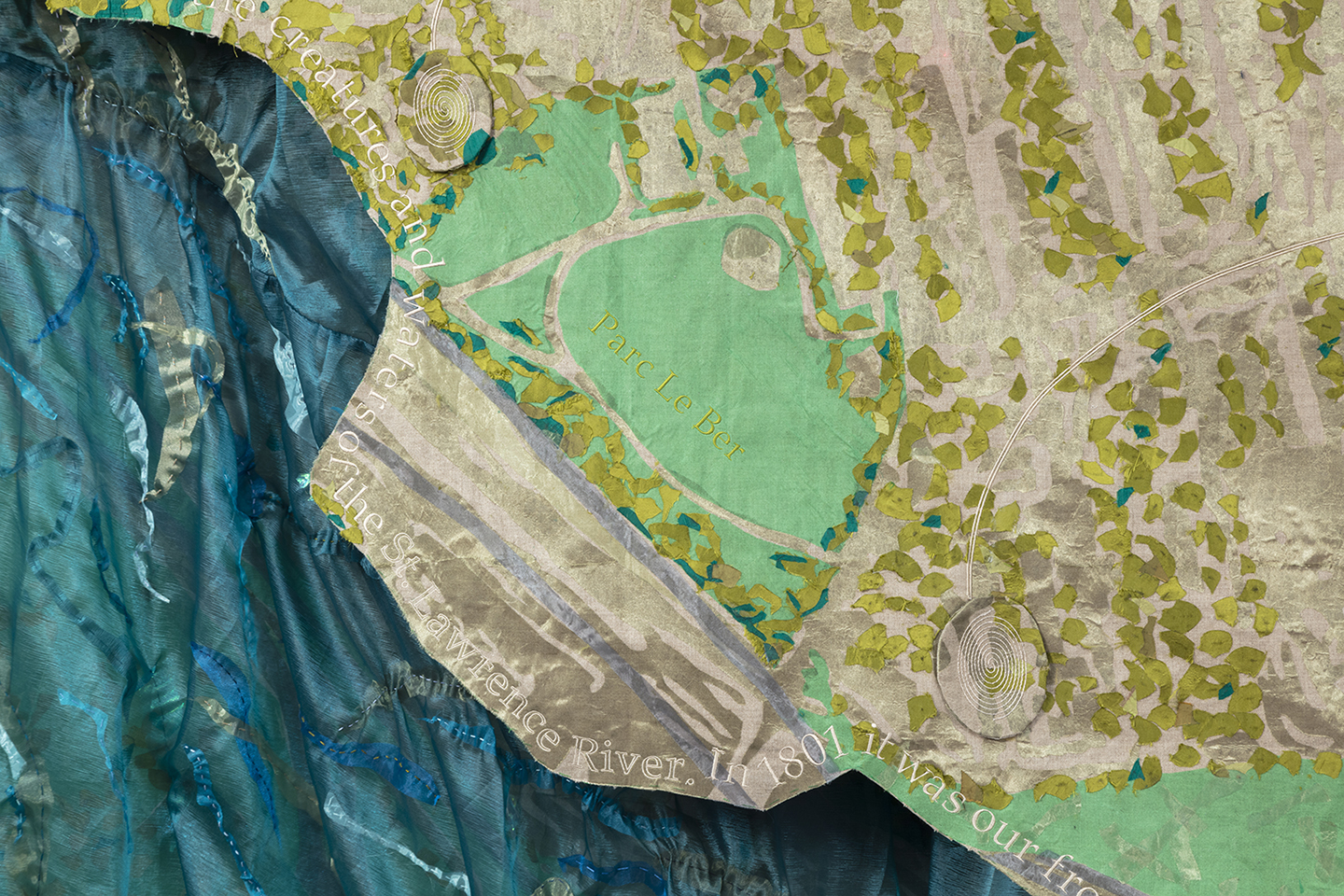
(Above) Audio component 1: Comment by Natacha Alexandroff, member of the Société d’histoire de Pointe-St-Charles and advocate for restoring local access to the St. Lawrence River.
(Above) Audio component 2: Comment by Philippe Gachon, Professor of Hydroclimatology at the Université du Québec à Montréal and holder of a strategic research chair in Hydrometeorological Risks Under Climate Change, and co-applicant of Learning With the Saint Lawrence (2025-28).
(Below) Video component: You Are Here (6:02) demonstrating the interactivity of Kathleen Vaughan’s Walk in the Water at the McClure Gallery, Montreal, March 2020. Made in collaboration with videographer Margot Flores Torre.
- NEL MEZZO DEL CAMMIN (2012-2016): Series of five textile maps of walks in urban woods and greenspaces in Toronto and Montreal, featuring textile piecing, digital and hand embroidery.
4 images.
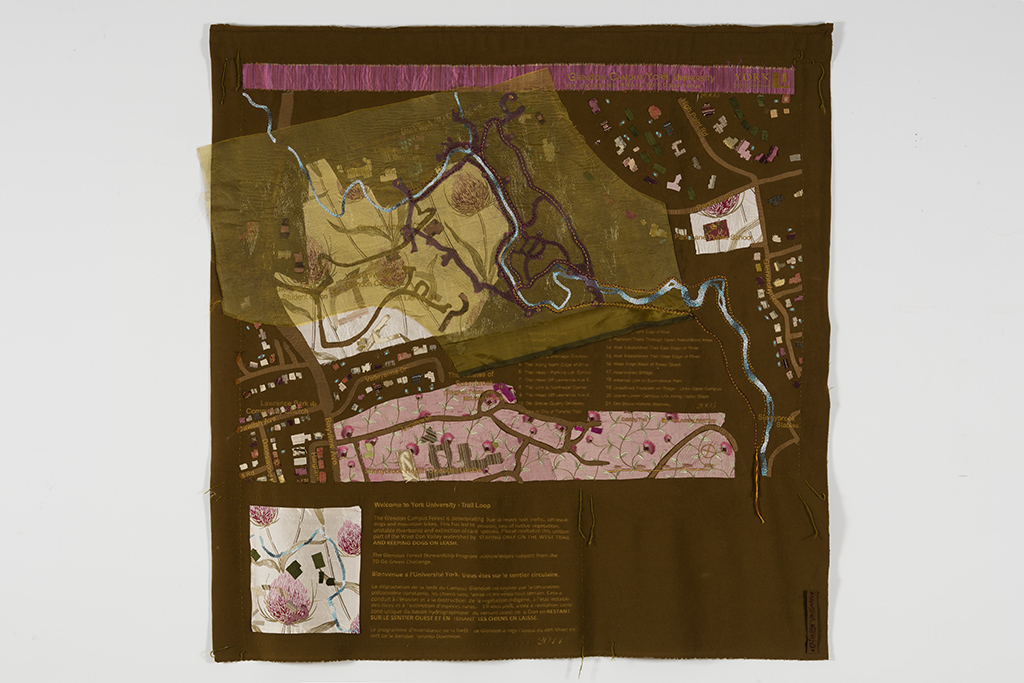
Context/Description: My series of five blanket-sized textile walking maps is a project of environmental justice, questioning who has the right to urban green space, with specific reference to woods and parks in Toronto and Montreal. The works use hand piecing, digital and hand embroidery to explore political ecologies and personal experience of these sites. Drawing on cartography, urban planning and geography, and created with the digital embroidery technology of the Textiles & Materiality cluster of Milieux Institute, these works engage the embedded power dynamics of maps, working into the gap between the authoritative bird’s eye view and lived experience of a place over time: my maps use digital embroidery processes to version ‘official’ portions of a map – surveyed contours, texts, and labels in both French and English – and hand-stitching to record trajectories of walks taken over time.
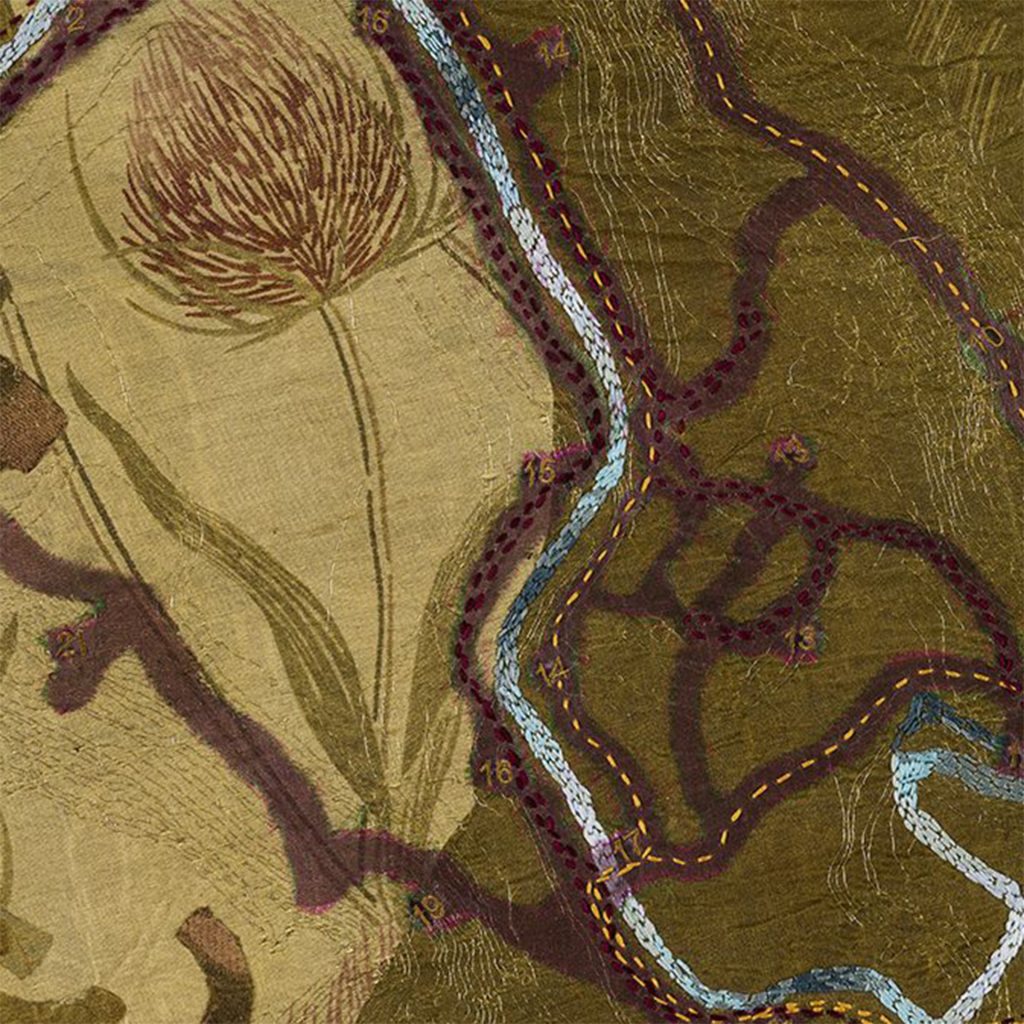
Relationship to proposed project: This body of interdisciplinary research-creation construes the urban forest as a complex system and considers multiple aesthetic and ethical issues of access to urban nature – a version of the approach of the proposed Learning With the St. Lawrence. The success of the series in international exhibition (Angell Woods was the only Canadian artwork selected for the International Textile Art Triennale in Riga, 2015) points to the broad resonance of the issues embodied by the work and its quality. These works have been the basis of two solo shows (Montreal, QC, and Dundas, ON) with accompanying catalogue, and have featured in several group shows.
